Angami leaders being received by the Sümi community and traditional dancers during the Ahuna Festival 2025 at Pughoboto on November 14.
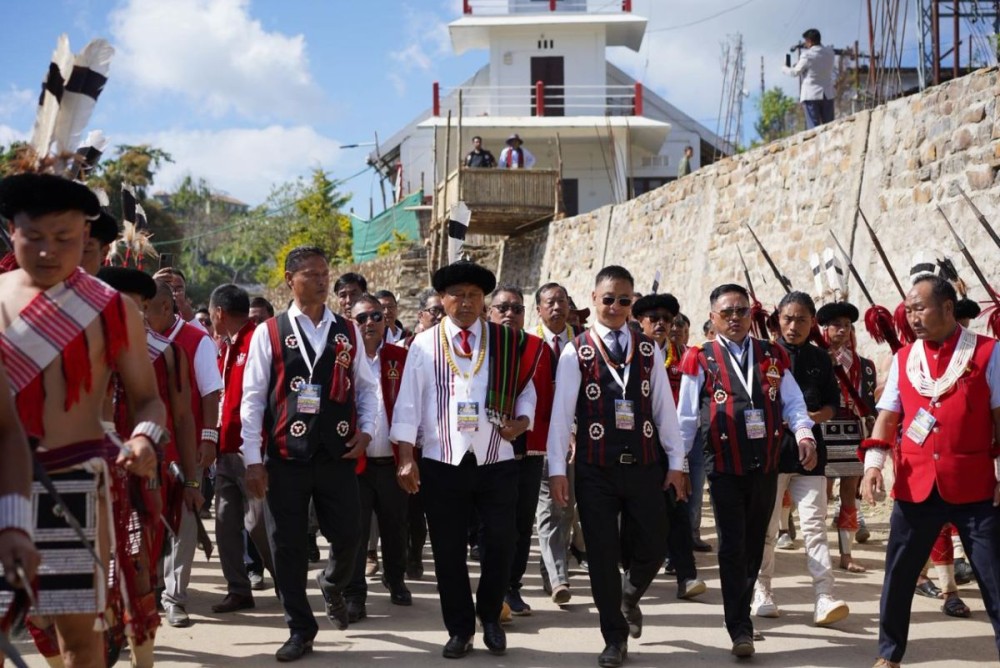
Morung Express News
Zunheboto | November 14
This year’s Ahuna Festival at Pughoboto placed uncommon emphasis on inter-tribal friendship and reconciliation, turning the Sümi community’s annual celebration of harvest and thanksgiving into a wider affirmation of unity between the Sümi and Angami peoples.
Held on November 13 and 14 under the theme “Bound by History, Bridging Generations,” the festival brought thousands together at the ancestral cradle of the Sümi, with both days organised by the Sümi Hoho and hosted by the Sümi Aphuyemi Frontal Organizations.

The presence of more than one thousand Angami brothers and an overall gathering of over four thousand lent particular weight to this year’s theme. Central to the programme was the unveiling of the Angami–Sümi Relationship Stone, a monument described as a symbol of longstanding friendship, shared history and renewed commitment between the two tribes.
The second day opened at Mishili Yepaqa Ground with a welcome tea followed by a cultural procession, after which the formal session focused on messages that consistently returned to unity, shared roots and the responsibilities of the present generation.

Delivering the welcome and presidential address, Dr Vihuto Asumi, President of the Sümi Hoho, said the Ahuna festival “reminds us that thanksgiving strengthens the community” and reflects humility, hope and togetherness. He noted that celebrating Ahuna at Pughoboto reaffirmed the Sümi community’s connection to its ancestral roots and to the ideals of faith, love and respect that have guided generations.
A major portion of his address centred on the historic and renewed Sümi–Angami relationship. Dr Asumi recalled the joint meeting held on January 24 at the APO Hall in Kohima where the Angami Public Organization and the Sümi Hoho, along with elders from both sides, resolved to further strengthen their ties. He observed that the two tribes have lived as neighbours, partners and friends, sharing boundaries and mutual respect, and highlighted that several Sümi by blood have become Angami by choice—a reflection, he said, of profound trust and kinship.
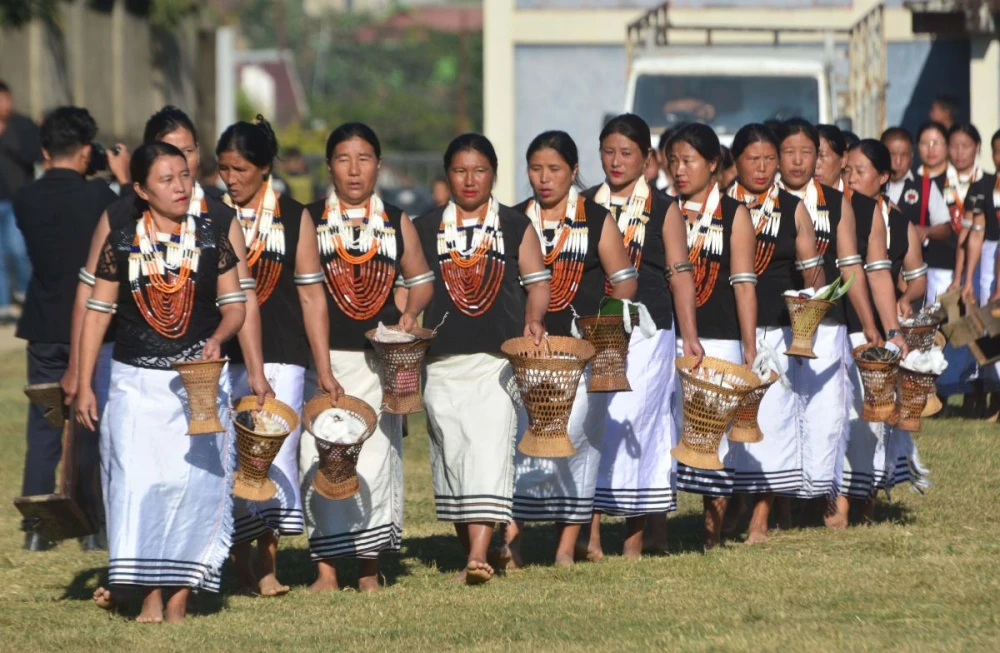
Describing the unveiling of the Relationship Stone as a landmark moment, he said the monument represents peace, unity and a commitment to carrying forward a legacy of friendship, adding that the Sümi–Angami relationship is “a blessing not only to Angamis and Sümis, but to the entire Naga family.” He expressed confidence that this strengthened bond would inspire greater harmony among Naga tribes, stressing that cooperation and understanding are essential for a peaceful and progressive society.
The stone was unveiled by Thejao Vihienuo, President of the Angami Public Organization, after a stone-unveiling prayer pronounced by Rev Dr Kiyeto G. Sema. Later in the programme, the Ahuna Blessing Prayer was offered by Rev Vibo Sumi.
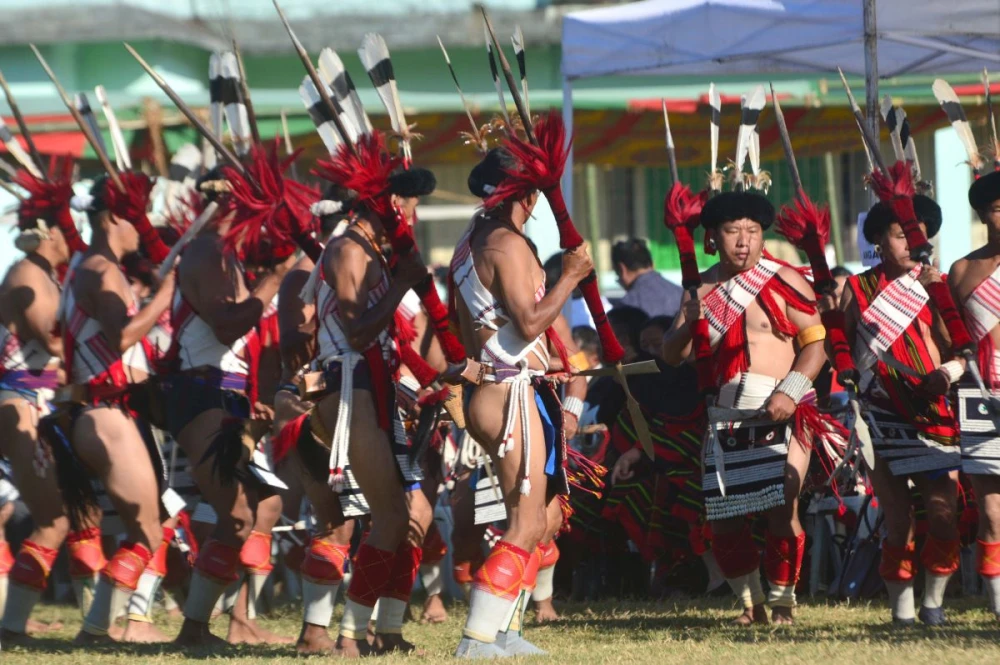
Addressing the gathering, Vihienuo spoke of the deep-rooted bonds between the two tribes. He said the monument reflects centuries-old ties and serves as a reminder to strengthen and deepen this bond for generations. Citing shared migration paths, settlements and mutual respect, he described the relationship as “rooted in friendship and confidence.” He acknowledged that the relationship had seen periods of mistrust in the past, often arising when self-interest overshadowed collective wellbeing. Without concern for one another, he said, respect diminishes and trust erodes. He added that “by God’s grace” both tribes are now positioned to renew the legacy and work towards progress not only for their communities but for the Naga people as a whole. He further urged Sümi and Angami citizens to extend this spirit of unity to all Naga tribes and expressed confidence that the celebration at Pughoboto would remain historic.
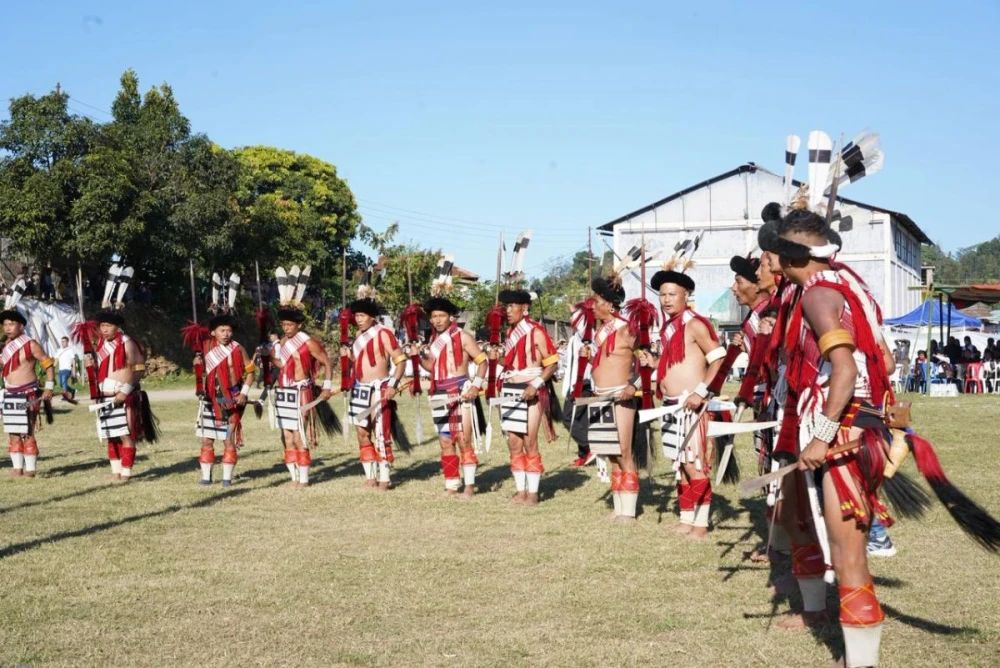
As Ahuna Papu, G. Kaito Aye, Minister for Roads & Bridges, called upon the Sümi community to celebrate with purpose and responsibility. While encouraging excellence in agricultural production, he also stressed the importance of sustaining the Sümi–Angami relationship and urged continued cooperation, stating that unity between the two communities can help address larger challenges faced by the Naga people. He added that the spirit of the post-harvest celebration should be shared with other Naga tribes to promote inclusivity and communal harmony.
Speaking at the festival organised under the joint stewardship of the Sümi Hoho and the Angami Public Organization, Dr Sukhato Sema, MLA of 13 AC Pughoboto, highlighted Nagaland’s fertile land, youth potential and the unprecedented opportunities available today. He noted that potential alone is insufficient without “discipline, dedication and direction.” Urging young people to use their knowledge for the greater good, he said, “Use your knowledge not merely for personal success, but to serve society.” He encouraged youth to transform challenges into opportunities and to unite rather than divide, expressing hope that this year’s Ahuna would inspire a new generation to lead with wisdom, compassion and courage.
Akükau Hetoho S. Zhimomi, President of the Sümi Kükami Hoho, reaffirmed that the Sümi remain one community despite living across various sub-divisions. He called upon elders of the Sümi Aphuyemi community to share their knowledge actively and guide younger generations, emphasising that unity is essential for preserving the community’s strength and heritage and that fragmentation brings neither blessings nor progress.
The formal session featured a welcome song by the Mishilimi Womenfolk, a presentation on the significance of Ahuna by Advocate Joshua Sheqhi and honours presented by Vixepu Swu, Convenor of the Resources & Local Arrangement Committee. Cultural presentations followed from Kohima Village, Müghami Melos, and Nagagenous, and Asaqhi was performed by A Asapu Sema. The programme concluded with a vote of thanks by Akükau Qhutovi Tenna, President of the Sümi Aphyumeyi Kükami Hoho.


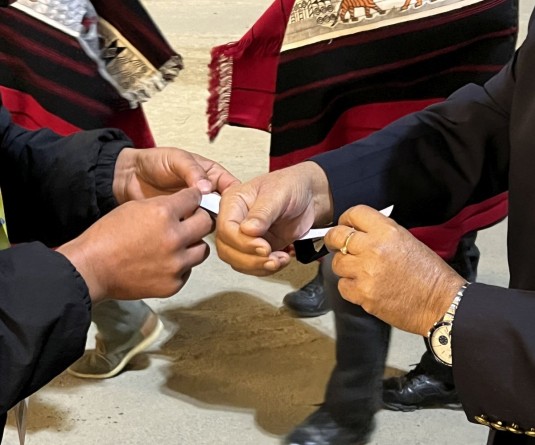

.jpg)

